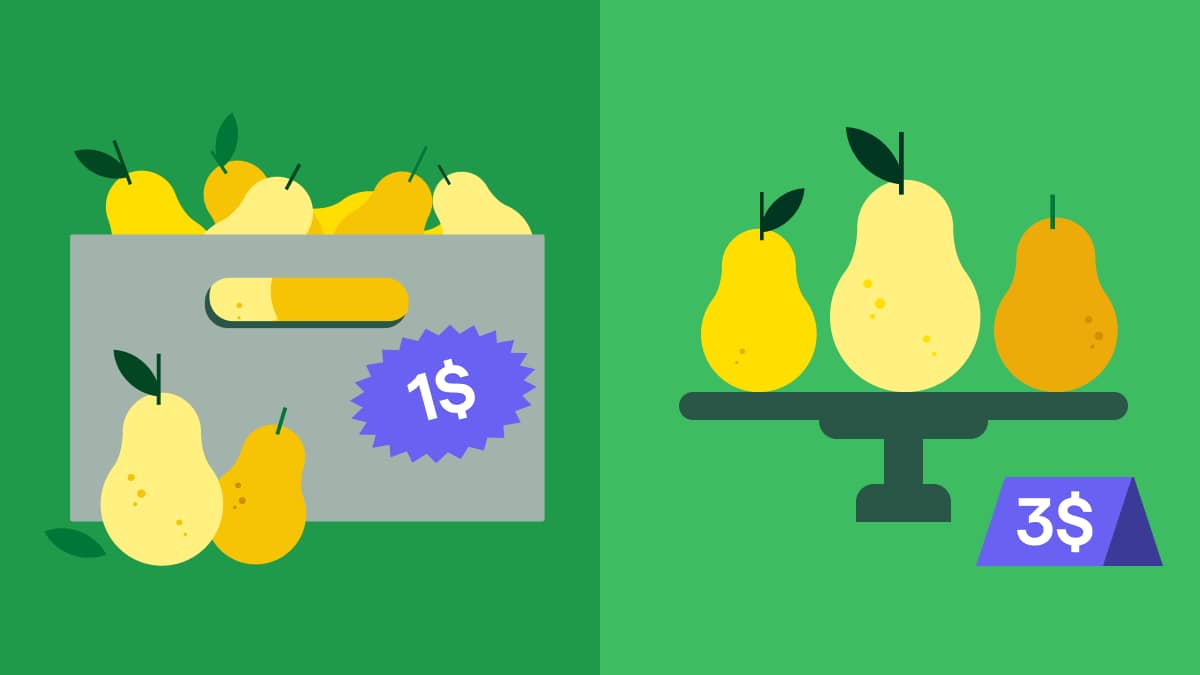Influencer marketing continues to evolve as one of the most impactful strategies for brand visibility, social proof and revenue growth. For startups and SaaS companies especially, it offers a powerful way to build trust, enter new markets and engage niche audiences without the upfront costs of traditional advertising.
This influencer marketing guide provides comprehensive information for small businesses and SaaS brands, including tips on finding suitable influencers, setting up collaborations and evaluating return on investment.
Key takeaways from the influencer marketing guide
Influencer marketing builds trust and boosts brand visibility through relatable content, such as tutorials, reviews or demos that feel authentic to the audience.
Smaller creators often drive stronger engagement, especially in niche or B2B segments.
SaaS brands benefit from in-depth demos and use case content that explains the real value of the product.
Pipedrive helps you track influencer outreach, manage campaigns and measure impact. Find out how Pipedrive can streamline your strategy with a free 14-day trial.
Influencer marketing is when brands partner with individuals who have built trust and reach in a specific niche. These influencers, from creators to industry experts, promote a product or service through content like tutorials, reviews, testimonials or co-branded posts.
Unlike conventional advertising, influencer marketing leverages trust and relatability. Audiences view influencers as peers or authorities, making their endorsements more authentic and persuasive.
For SaaS companies, influencer marketing can take the form of demo videos, feature reviews, tutorials or platform walkthroughs. For businesses selling a product, it often involves product placements, unboxings or lifestyle posts that naturally fit into the influencer’s content stream.
Note: According to Linqia’s 2025 State of Influencer Marketing Report, for 35% of respondents, influencer marketing makes up more than 25% of their total marketing budgets, underscoring its growing role in driving both revenue and sales.
How Pipedrive’s affiliate team uses automations to reduce manual tasks and improve efficiency
Pipedrive’s affiliate team streamlined its programme by automating workflows and integrating PartnerStack, resulting in an 80% reduction in repetitive administrative work.
These automations allowed the team to focus on what matters most – building and managing stronger affiliate relationships at scale. Additionally, CRM automations helped create a seamless onboarding and communication process.
As a result, monthly affiliate applications increased from around 40 to nearly 90, without the need to add extra headcount. Pipedrive’s integration capabilities also enabled the team to centralise communication and track performance with ease, making it simpler to measure ROI and act on insights promptly.
Read the full Pipedrive affiliate case study to see how the team achieved sustainable growth without expanding the team.
Why is influencer marketing important
Influencer marketing delivers results across the funnel, from raising awareness to driving revenue.
According to Influencer Marketing Hub’s 2024 Benchmark Report, the industry is projected to reach a market value of $32.55 billion by the end of 2025, up from $24 billion in 2024. This demonstrates explosive growth and businesses’ growing confidence in the channel.
Influencer marketing works because influencers earn trust from their followers. Rather than sharing advertisements, their suggestions feel real and convincing because they share content regularly.
Smaller influencers, who have followers with specific interests, can help reach local or niche markets. This is particularly beneficial for businesses that sell specialized software or B2B tools.
In the world of SaaS, influencers can make even the most intricate platforms relatable by showcasing practical uses, effectively connecting the dots between features and benefits.
How to get started with influencer marketing
An effective influencer strategy begins with clear objectives, the right partnerships and a way to measure performance. Here are five steps to guide you in the right direction.
1. Define goals and audience
To begin with, establish a definitive campaign objective, such as lead generation, brand recognition, app acquisition or enhancing onboarding processes. The objective will dictate the selection of suitable influencers, the type of content they produce and the performance metrics that will be prioritized.
Defining your target audience is a crucial step in achieving success. It is imperative to carefully consider their media consumption habits and online preferences.
Additionally, identifying influencers who already possess a strong presence within these communities is highly advantageous.
For SaaS brands, creators specializing in technology, productivity or industry-specific verticals have been proven to yield particularly impactful results.
According to Sprout Social’s Pulse Survey 2024, 92% of marketers say creator-led content outperforms content posted on brand-owned channels, with 83% linking it directly to stronger conversions, highlighting its strategic value for SaaS.
2. Identify the right influencers
Not all influencers deliver the same value. Prioritize relevance and engagement over pure follower count. Look for influencers who consistently interact with their audience and whose tone aligns with your brand.
Micro-influencers (10–50k followers) and nano-influencers (under 10k) regularly outperform larger creators on both engagement and cost.
On TikTok, for example, Grin reports that nano-influencers achieve engagement rates of around 18%, showcasing just how powerful smaller voices can be in short-form video campaigns.
For SaaS brands, B2B creators and LinkedIn influencers can provide more credibility and reach within the right professional circles.
3. Choose the right platform
Consider your audience’s habits when determining where to focus your influencer efforts. If your product relies heavily on captivating visuals or appeals to a particular lifestyle, Instagram would be a great platform to utilize.
For SaaS or tools that benefit from explanation, YouTube is ideal for tutorials, demos and in-depth reviews. TikTok, with its short and fast-paced content, is best for building brand awareness and showcasing creative narratives.
LinkedIn is especially valuable for thought leadership and professional reach. Meanwhile, podcasts and newsletters offer more in-depth opportunities to build trust, ideal for long-form storytelling or niche audiences.
4. Create a compelling offer
To attract and keep great influencers, offer genuine value. Offers might include affiliate commissions, fixed payments, early access to your product, special features or the chance to collaborate on branded content.
Provide a clear brief, creative assets and usage guidelines to make it easy to collaborate, but leave room for the creator’s voice. Content that feels natural and personal tends to perform best.
5. Track and measure results
To understand what’s working, implement tracking from the start. Use UTM parameters, custom landing pages or promo codes to connect influencer content to real outcomes. For SaaS campaigns, focus on performance metrics like sign-ups, demo requests, qualified leads and revenue.
Use tools or even UTM tracking within Pipedrive to monitor campaign performance, manage relationships and scale what’s working.
When influencer campaigns are tracked and aligned with business outcomes, they become repeatable growth drivers.
How is influencer marketing different from traditional marketing?
Influencer marketing in SaaS goes beyond awareness. It’s about explaining value, building trust and helping potential buyers understand how a tool fits into their workflow.
Successful SaaS influencers understand the tools they’re promoting. They can explain how a product works, why it matters and how it solves real pain points for specific industries or roles.
The ability to translate features into outcomes builds credibility with professional buyers who are making considered decisions based on return on investment (ROI), efficiency and product fit.
Content that works in this space tends to focus on real-world applications. Influencers walk through products in detail, show how they use them in their own workflows and share insights from founders or users to strengthen credibility. Some go further, comparing platforms to alternatives to help audiences evaluate their options.
“Demos were the most frequently consulted resource for technology buyers, with 54% utilizing at least one type of demo.” – TrustRadius, 2024 B2B Buying Disconnect
SaaS purchases often involve longer sales cycles, the kind of influencer content plays a critical role in guiding research and building trust. It’s most effective when the creator is already immersed in conversations around productivity, industry tools or business strategy.
Tools to help run influencer campaigns
These tools can help manage influencer outreach, compliance and performance tracking.
Tool | Primary Features |
Track influencer outreach in a visual pipeline, set tasks, automate follow-ups and monitor conversions with campaign tags or deals. | |
Influencer discovery, outreach templates, campaign tracking and reporting. | |
Identifies top content and authors in your industry, useful for finding topic influencers. | |
Great for affiliate-based influencer models. Provides link tracking and payout tools. |
Core key performance indicators (KPIs) for influencer marketing
To understand what’s working, influencer marketing efforts should be measured against clear performance goals. Here are some key metrics worth tracking:
Engagement rate. Shows how much the audience is interacting with influencer content: likes, shares and comments. It’s a strong indicator of relevance and connection, especially when working with smaller creators. Engagement score metrics help businesses measure how involved and committed leads and customers are.
Click-through rate (CTR). CTR reflects the percentage of viewers who clicked a link in the influencer’s post. It’s useful for measuring interest and intent, especially in SaaS campaigns that drive traffic to a demo or signup page.
Conversion rate. Tracks how many people complete a desired action after clicking, such as creating an account, starting a free trial or booking a call. It’s key for evaluating bottom-of-funnel performance.
Return on Investment (ROI). Return on investment compares the revenue generated to the cost of the campaign. For SaaS, this might include monthly recurring revenue (MRR) or annual recurring revenue (ARR) from trial signups attributed to influencer activity.
Audience sentiment. Qualitative feedback, like comments or replies, helps gauge tone and trust. It’s especially valuable for assessing how well your message landed.
Why use Pipedrive for influencer marketing?
Influencer campaigns often involve multiple conversations, negotiation steps and follow-ups. Pipedrive’s visual customer relationship management (CRM) helps teams stay organized, tracking outreach, onboarding steps and deal outcomes in one place.
You can tag influencer deals by campaign or content type, use workflow automation to trigger follow-ups and set up reminders for contract deadlines or content reviews.
Notes, messages and contact history stay connected to each influencer, making collaboration easy across teams. With integrations for email sync, Web Forms and tools like Google Analytics, Pipedrive acts as a central workspace for managing influencer outreach and tracking performance.
For SaaS brands in particular, custom fields allow you to track referral codes, trial signups or demo bookings tied to individual influencers.
Interested in earning by promoting tools you trust? Apply to become a Pipedrive Affiliate and receive a generous recurring revenue share. Learn more here.
.
Final thoughts
Influencer marketing gives SaaS companies and small businesses a trusted, high-impact way to grow. When built on clear goals, strong content and the right partners, it can drive real revenue.
Whether you’re partnering with a tech YouTuber or a local micro-influencer, treat the collaboration as a long-term relationship. With the right tools and strategy, influencer marketing can boost credibility, reach and results.
Easily track your influencer outreach, measure results and optimize future campaigns – all in one place. Start your Pipedrive free 14-day trial today.







